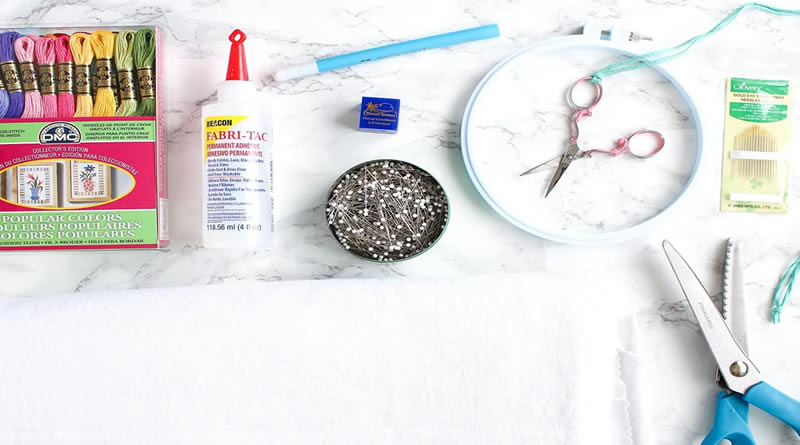Which materials are used most in Crafts and Sewing and how to work with different materials?
Crafts and sewing are popular hobbies enjoyed by many people around the world. They allow us to express our creativity and create unique, personalized items. When it comes to these activities, one of the most important aspects is the choice of materials. In this article, we will explore the most commonly used materials in crafts and sewing, and provide tips on how to work with different materials.
Types of Materials
Crafts and sewing involve a wide range of materials, each with its own unique properties and characteristics. Here are some of the most commonly used materials:
Yarn
Yarn is a type of thread made from natural or synthetic fibers. It is commonly used for knitting and crocheting, and comes in a wide range of colors, textures, and weights. Some popular types of yarn include:
- Acrylic yarn
- Wool yarn
- Cotton yarn
- Silk yarn
- Mohair yarn
- Alpaca yarn
Fabric
Fabric is a flexible material made from fibers, and is used in a variety of crafts and sewing projects. There are many different types of fabric, including:
- Cotton fabric
- Silk fabric
- Wool fabric
- Polyester fabric
- Denim fabric
- Linen fabric
- Satin fabric
- Velvet fabric
Paper
Paper is a thin material made from wood pulp or other plant fibers, and is used in a variety of crafts such as scrapbooking and card making. Some popular types of paper include:
- Cardstock
- Construction paper
- Scrapbook paper
- Origami paper
- Tissue paper
Wood
Wood is a natural material that is used in a variety of crafts such as carving and woodworking. There are many different types of wood, including:
- Pine
- Oak
- Maple
- Cherry
- Mahogany
Choosing the Right Material
When choosing a material for your craft or sewing project, it is important to consider its properties and characteristics. Here are some factors to consider:
- Strength and durability
- Texture and feel
- Color and appearance
- Cost
- Availability
It is also important to consider the specific requirements of your project. For example, if you are making a cozy blanket, you may want to choose a soft, warm yarn, while if you are making a sturdy tote bag, you may want to choose a durable fabric like denim.
Working with Materials
Working with different materials requires different techniques and tools. Here are some tips on how to work with the most commonly used materials:
Yarn
When working with yarn, it is important to choose the right knitting needles or crochet hook for the weight of the yarn. It is also important to maintain a consistent tension throughout your project, and to pay attention to the pattern instructions.
Fabric
When working with fabric, it is important to choose the right type of needle and thread for the fabric, as well as to use the appropriate sewing machine settings. It is also important to wash and iron the fabric before starting your project, to prevent shrinking or puckering.
Paper
When working with paper, it is important to use the right tools and adhesives, such as a paper cutter and double-sided tape. It is also important to consider the weight and texture of the paper, and to use acid-free materials to prevent yellowing or discoloration over time.
Wood
Wood is another popular material used in crafting and woodworking. It is versatile, durable, and can be used to create a wide variety of items, from furniture and decor to toys and utensils. There are many different types of wood, each with its own unique properties, strengths, and weaknesses.
Types of Wood
- Hardwoods: Hardwoods come from deciduous trees that lose their leaves in the fall. They are dense and durable, making them ideal for furniture and other long-lasting items. Examples of hardwoods include oak, maple, cherry, and walnut.
- Softwoods: Softwoods come from evergreen trees that retain their leaves year-round. They are less dense than hardwoods and are often used in construction and outdoor projects. Examples of softwoods include pine, cedar, and spruce.
- Plywood: Plywood is made from thin sheets of wood that are glued together to create a strong and stable material. It is commonly used in construction and DIY projects.
- MDF: MDF, or medium-density fiberboard, is made from compressed wood fibers and resin. It is an affordable and versatile material that is often used in furniture and cabinetry.
Choosing the Right Wood
When choosing wood for a crafting or woodworking project, it is important to consider its intended use, durability, and appearance. Hardwoods are a good choice for items that will see a lot of use, such as furniture or cutting boards, while softwoods are better suited for outdoor projects or decorative items. Plywood and MDF are affordable options that can be used for a wide variety of projects.
Working with Wood
Working with wood requires some specialized tools and techniques, but with practice, it can be a rewarding and enjoyable craft. Some basic woodworking tools include a saw, chisel, drill, sandpaper, and wood glue. Safety precautions, such as wearing protective eyewear and gloves, should also be taken when working with wood.
Conclusion
Crafting and sewing are versatile hobbies that offer endless possibilities for creative expression. By understanding the different types of materials and how to work with them, crafters and sewists can create beautiful and functional items that will last for years to come.
FAQs
- What is the best material for beginner sewers to work with?
- Cotton fabric is a good choice for beginner sewers because it is easy to work with and widely available.
- What kind of yarn is best for a beginner knitter?
- Worsted weight yarn is a good choice for beginner knitters because it is easy to handle and comes in a wide variety of colors.
- Can I use regular paper for paper crafts?
- Yes, regular paper can be used for paper crafts, but specialty papers such as cardstock or scrapbooking paper may be more durable and have better printing quality.
- What type of wood is best for making furniture?
- Hardwoods such as oak, maple, cherry, and walnut are good choices for making furniture because they are durable and can withstand wear and tear.
- Do I need a lot of tools to start woodworking?
- While there are some specialized tools required for woodworking, beginners can start with a few basic tools such as a saw, chisel, drill, and sandpaper, and gradually build their collection as needed.




